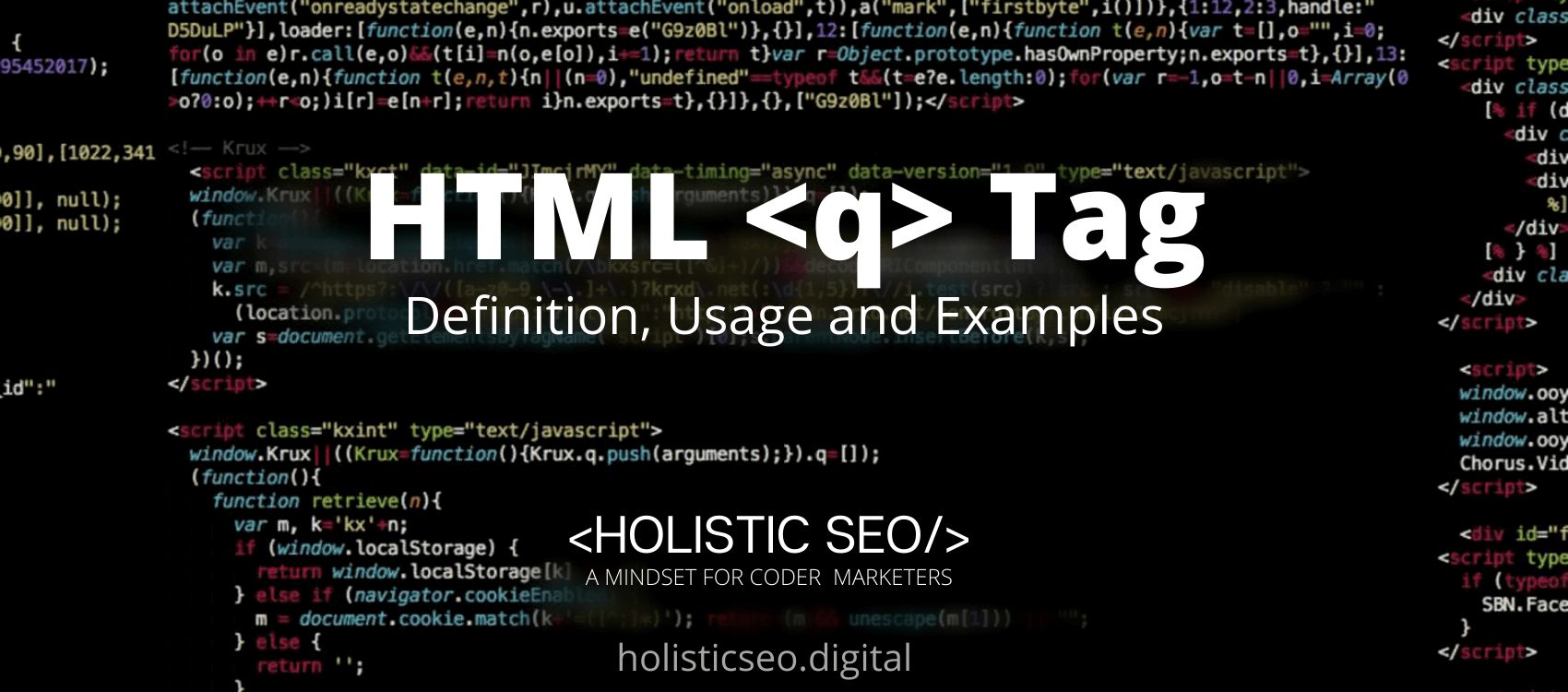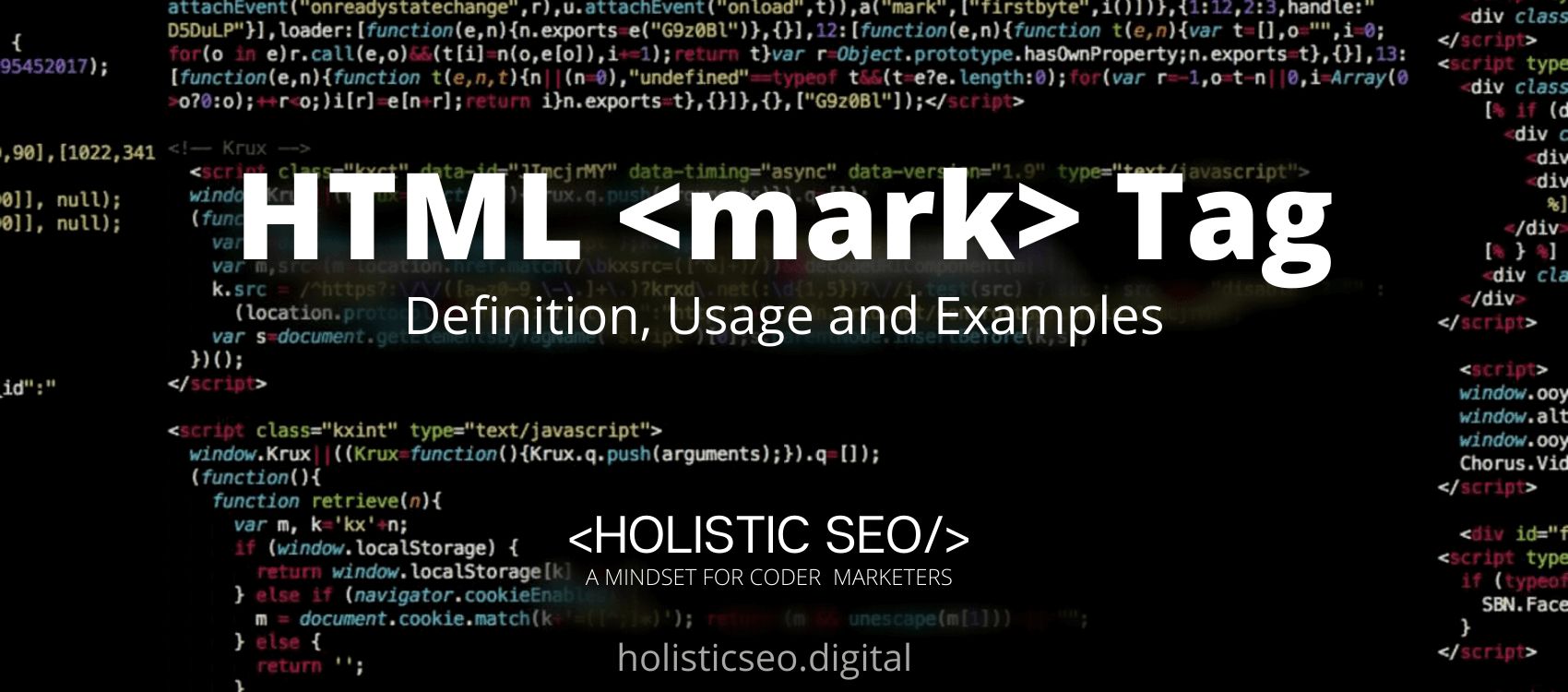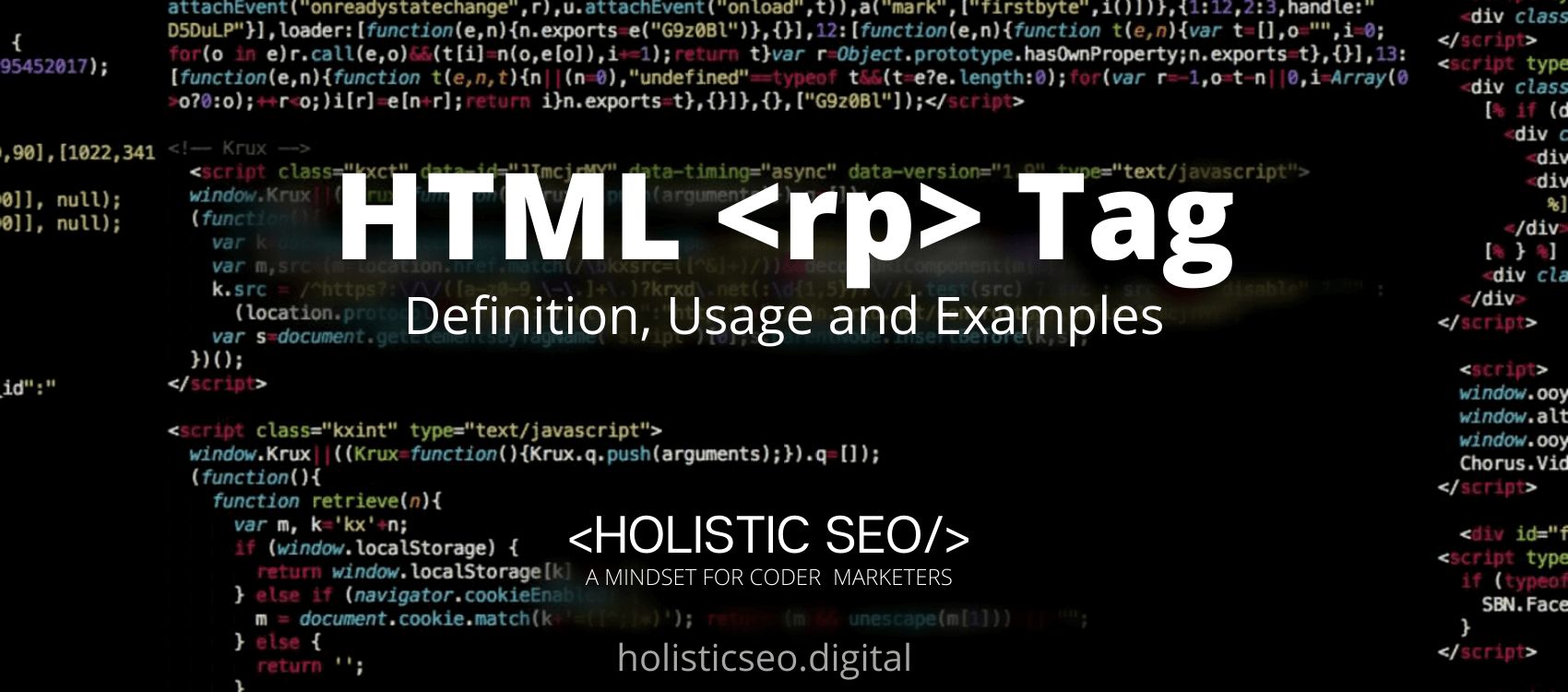The <q> HTML Tag indicates that the text enclosed is a brief inline quotation. The majority of modern browsers accomplish this by enclosing the text in quotation marks. This element is for brief quotations that do not require paragraph breaks; for lengthy quotations, use the <blockquote> HTML Tag. The <q> HTML Tag is used to indicate a brief quotation. The <q> HTML Tag is part of the Formatting HTML category in HTML Element Reference. The attributes of the <q> HTML Tag are cite, global, and event attributes.
<q> code block example to learn how it works is given below.
<q>Quotation</q>The second example usage of the “<q>” code block example is given below.
<p>Holistic SEO Digital:
<q>A Mindset for Coder Marketers</q>
</p>What is <q> HTML Tag?
The <q> HTML Tag is a standard quotation mark that is used to indicate a brief quotation. Normally, the browser surrounds the quotation with a quotation mark. It is necessary for web developers because it is used for short quotations. The <blockquote> tag must be used for longer quotations, as it is a block-level element. The <q> HTML Tag requires both a beginning and an ending tag.
How to Use <q> HTML Tag?
To use <q> HTML Tag, the web developer should insert a short quotation between the start and end tags. However, if it is a long quotation, then the <blockquote> HTML Tag is used.
Example Usage of <q> HTML Tag?
The following example of usage of <q> HTML Tag is given below.
<p><cite>Benjamin Franklin</cite> said <q> A good example <em> is </em> the best sermon</q>.</p>What are the Attributes of <q> HTML Tag?
There are multiple attributes for the <q> HTML Tag. The following attributes are listed below.
- Global Attributes: The <q> HTML Tag supports global attributes. All HTML elements, even those not specified in the standard, can have global attributes. This means that any non-standard elements must nevertheless allow certain characteristics, even if using such elements makes the content non-HTML5 compliant.
- Event Attributes: The <q> HTML Tag supports event attributes. The Event Attributes always have a name that begins with “on” and is followed by the name of the event for which it is intended. They specify a script to run when an event of the defined type is dispatched to the element with the specified attributes.
- Cite Attribute: The <q> HTML Tag supports cite attribute. The cite attribute indicates the URL of the source of the quote.
What are the Default CSS Settings for <q> HTML Tag?
The following are the Default CSS Settings for the <dl> HTML Tag.
q {
display: inline;
}
q:before {
content: open-quote;
}
q:after {
content: close-quote;
}What are the Related other HTML Tags to <q>?
The other related HTML Tags to <q> HTML Tag are listed below.
- <em> HTML Tag: The <em> HTML Tag is related to <q> HTML Tag because they are both in formatting HTML Tags. The <em> HTML Tag is used to make text stand out.
- <font> HTML Tag: The <font> HTML Tag is related to <q> HTML Tag because they are both in formatting HTML Tags. The <font> HTML Tag is used to set the font for text.
- <i> HTML Tag: The <i> HTML Tag is related to <q> HTML Tag because they are both in formatting HTML Tags. The <i> HTML Tag is used in HTML to show what text is more important or different than the rest.
- <ins> HTML Tag: The <ins> HTML Tag is related to <q> HTML Tag because they are both in formatting HTML Tags. The <ins> HTML Tag is used to describe text that was added.
- 48 Online Shopping and Consumer Behavior Statistics, Facts and Trends - August 22, 2023
- B2B Marketing Statistics - August 22, 2023
- 38 Podcast Statistics, Facts, and Trends - August 22, 2023


